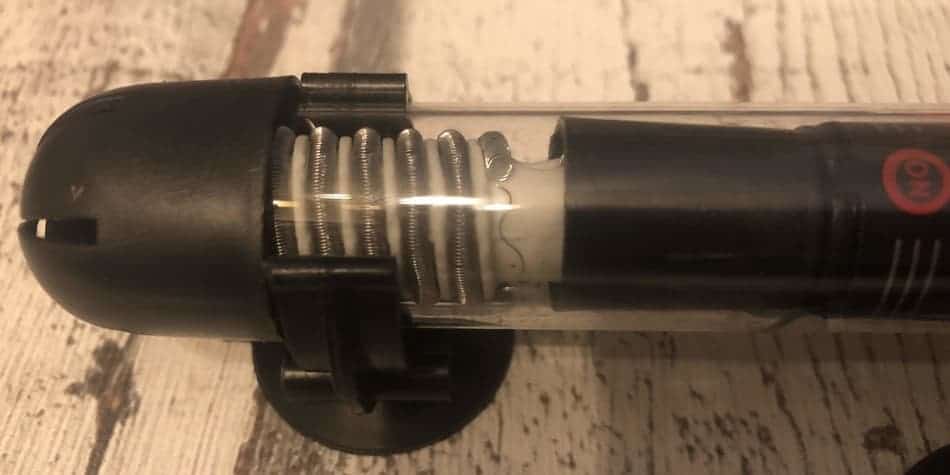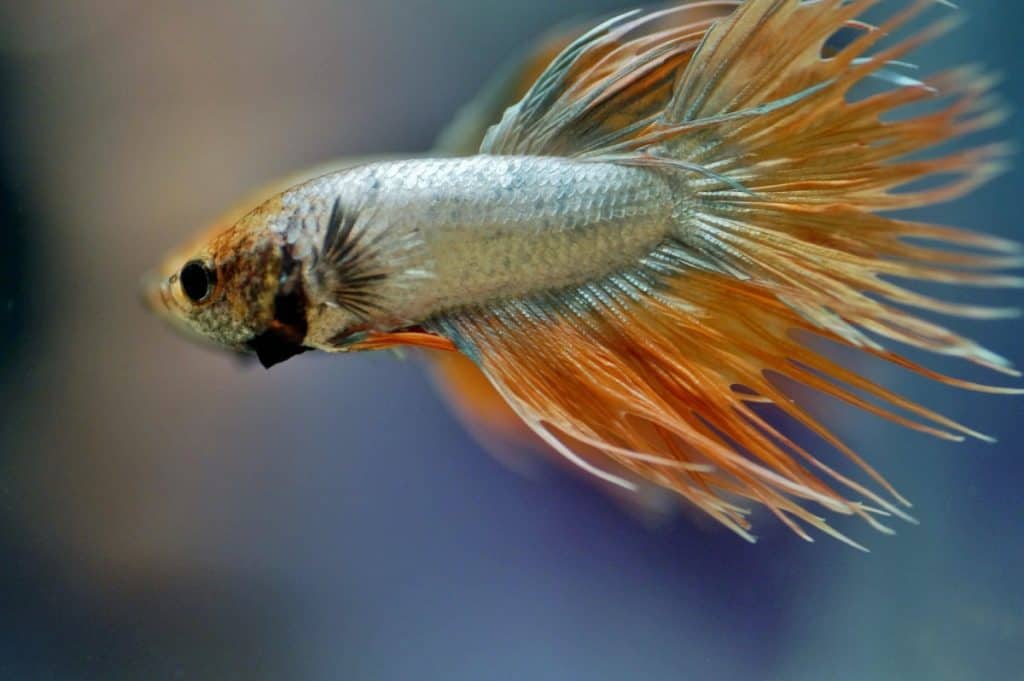Keeping your betta’s tank at the proper temperature is essential for their health and well-being. In this article, I will discuss the ideal temperature range for bettas and how you can ensure that your aquarium stays within that range.
Bettas are tropical fish that need warm water to survive, around 78-80 °F (25-27°C). Maintaining the correct temperature ensures your fish gets enough oxygen and prevents diseases like fin rot or swim bladder disorder.
Finally, once you have determined the right temperature for your betta’s tank, it’s important to watch it regularly. It’s easy for tanks to get too hot or cold if not properly monitored; luckily, there are plenty of tools available such as thermometers and heaters, which can help maintain the optimal environment for your fish friend. Now let’s dive deeper into these topics and explore more about keeping your betta healthy by maintaining the perfect water temperature!
Ideal Aquarium Conditions
Betta fish need specific water conditions to survive and thrive. To keep your betta healthy, you’ll want to pay attention to the aquarium lighting, water filtration, and water chemistry. Live plants also provide places for your fish to hide and explore. As well as improving oxygen levels and helping maintain nitrogen balance in the tank. Lastly, proper tank size is essential, too – a minimum of 2 gallons per Betta should be provided. All these factors are integral to creating an ideal betta fish environment! Taking time to create this perfect setting will ensure that your betta lives a long and happy life with you.

Recommended Water Parameters
Now that we have discussed the ideal aquarium conditions for betta fish, it’s time to delve into what many consider an even more important factor of their care: water parameters. The temperature of your betta fish tank is one of the most crucial elements in ensuring they thrive. Your betta will be happiest with a water temperature between 78-82 degrees Fahrenheit or 25-28 Celsius. If you have difficulty maintaining these temperatures, several tools, such as thermometers and heaters, are available on the market today. Additionally, if your room gets too hot, try closing the blinds during the day or running a fan near the tank.
When determining how warm your water should be for optimal health and happiness, remember that larger tanks take longer to reach equilibrium than smaller ones – so plan accordingly! It’s also worth noting that drastic fluctuations in temperature can cause stress on your betta and lead to disease. To ensure top-quality water parameters at all times, invest in a good filter system and keep up with weekly partial water changes – this way, fresh oxygenated water enters your tank regularly, and any toxins accumulated over time will be removed efficiently. An unhealthy environment caused by poor maintenance could spell disaster for your beloved pet – so follow best practices when caring for them!
Heating And Cooling Solutions
Heating and cooling solutions for the optimal water temperature of a betta fish tank are essential. Several options are available to ensure your betta can live in an environment that mimics its natural habitat as closely as possible. A heating/cooling pad, temperature controller, cooling fan, or chiller unit can all be used to maintain the desired temperature range. The most important factor when selecting any of these items is ensuring they have accurate and consistent readings with little variance from time to time.
It’s also important to invest in a good-quality water thermometer so you can regularly monitor your tank’s exact temperature. This will help you determine if additional measures need to be taken to heat or cool it depending on how far away it gets from the ideal range. By taking steps like this and investing in quality equipment, you’ll give yourself peace of mind knowing your betta’s home provides them with everything they need!

Maintaining Consistent Temperature
The most important thing you can do to keep your betta fish healthy and thriving is to maintain a consistent temperature in the tank. You’ll need an aquarium thermometer to track the water temperature accurately. Betta fish prefer temperatures between 76-82 degrees Fahrenheit, with 78-80 ideal. To help ensure constant stability of the tank temperature, ensure it doesn’t fluctuate more than 2 or 3 degrees either way; this will provide them with optimal living conditions.
It’s also important to regularly check the thermometer readings and adjust as needed. If there are sudden changes in temperature due to weather or other external factors, take steps to correct it immediately by adding warm water if necessary. This process should be done slowly over time instead of drastically changing the tank environment overnight – sudden temperature shifts can stress out your betta fish and even cause death. By monitoring and adjusting your aquarium’s temperature accordingly, you’ll give your betta fish a comfortable home they love!
Alternatives To Heaters
We’ve discussed the importance of maintaining a consistent temperature for your betta. Let’s explore some alternatives to traditional water heaters.
The first and most obvious is a water chiller. It works by transferring cool air or liquid from one area to another; this helps regulate the tank’s temperature without using additional energy sources. Water chillers are especially useful in larger tanks where heating costs can become expensive.
Another option is to keep your room temperature optimal for bettas – around 76-80°F (24-27°C). If you choose this route, use digital thermostats and submersible heaters to easily monitor and maintain your desired temperature range. This approach requires less equipment than other methods but still has pros and cons.
Ultimately, each setup will depend on your betta fish tank’s size, environment, and specific needs. As such, it’s important to research these various options before deciding which method would best suit your situation. With careful consideration, you should have no problem finding the perfect solution for keeping your betta happy and healthy!

Frequently Asked Questions
How Often Do I Need To Change The Water In My Betta Fish Tank?
When it comes to the health of your betta fish, one of the most important factors is how often you need to change out its tank water. While this may seem like a hassle, regular water changes are essential for keeping your fish healthy and happy. To ensure you don’t miss any key details in setting up an appropriate water-changing frequency schedule, let’s look at what you should know about betta fish water changes!
First, it’s important to understand why it’s necessary to change out your betta fish tank water regularly. As your fish swims around and interacts with their environment, waste and other particles can accumulate in the water over time. This affects the water quality and makes it difficult for them to stay healthy and happy without frequent cleanings. Additionally, while some tanks come equipped with a filter system to help keep things running smoothly, there are still times when manual intervention will be needed.
By following a few simple guidelines when establishing your own unique routine for changing out the water in your betta fish tank, you’ll be able to ensure that your pet gets all the care they need – no matter what setup you have! Start by doing partial water changes every two weeks; this helps keep contaminants from building up too quickly between full changes and ensures that your pet has access to plenty of fresh oxygenated water.
When it comes time for full-tank replacements (which usually require anywhere from 20% – 40% of the total volume), always aim to replace it with dechlorinated tap or aquarium-grade conditioned H2O kept at the same temperature as before. Doing these steps consistently will ensure that you and your betta fish receive all the benefits of proper freshwater maintenance – including peace of mind knowing their habitat is safe and well-maintained!
What Type Of Filter Should I Use In My Betta Fish Tank?
Choosing the right filter for your betta fish tank is essential to keeping them healthy and happy. Several types of filters are available, including aquarium filters, external filters, and filter systems. Each type has its own advantages and disadvantages when filtering water for a betta fish tank. To help you make an informed decision, let’s look at the various filter types in more detail.
When it comes to aquarium filters, these typically have built-in filtration media that trap debris before allowing clean water into the tank.
The most common types of filtration media include activated carbon, sponge material, and mechanical media like floss pads or ceramic rings. This filter also provides biological filtration, which helps remove ammonia from the water so your betta can live comfortably in their environment.
External filters provide a robust solution for larger tanks with heavy bioloads as they usually feature multiple stages of filtration, such as chemical adsorption, mechanical straining, and biological breakdown process. These systems come with various components like pumps, heaters, UV sterilizers, etc., making them ideal for large setups where there’s a need to keep things efficient while reducing maintenance time.
Lastly, filter systems are designed specifically for use with smaller tanks as they don’t require any additional space outside the actual tank itself; they attach directly onto the side walls and draw in dirty water through one end, then force it out on the other side after being filtered by internal components like sponges or bio balls.
No matter what type of filter you decide to use for your betta fish tank setup, be sure always to follow manufacturer instructions carefully and regularly replace needed parts according to schedule guidelines provided by manufacturers; this will ensure that your pet gets all the benefits associated with having clean water at all times!
Is It Safe To Add Aquarium Salt To The Water For My Betta Fish?
The question of whether it is safe to add aquarium salt to the water for betta fish comes up often. As an expert in betta fish water temperature, I can confidently say that adding a small amount of salt to your betta’s tank is generally safe and recommended. But there are some important considerations you should consider before doing so.
When adding salt to your betta’s tank, it’s essential to use aquarium-grade salt specifically designed for use in freshwater tanks. This type of salt will contain fewer minerals than plain table or “aquarium-safe” salts, which could be harmful over time if used with a betta fish aquarium. Additionally, when introducing any new substance into your betta’s environment, start using only a very small amount first and observe how your fish responds before increasing the concentration.
It’s also important to remember that even though adding a small amount of aquarium salt may provide benefits such as increased disease resistance and improved gill health, too much can cause problems like osmotic stress or electrolyte imbalance. It’s best not to exceed one teaspoon per gallon on average; however, this ratio may need adjusting depending on factors such as the size of your tank and what other substances have already been added. Therefore, always err on the side of caution—consulting a veterinarian if necessary—before making any changes to the salinity levels in your betta fish tank.
Can I Use Tap Water For My Betta Fish Tank?
When keeping a betta fish, selecting and preparing the water is one of the most important aspects. Many owners wonder if they can use tap water for their betta’s tank. The answer depends on how you prepare it before introducing your betta to its new home.
First and foremost, always check with local regulations about using tap water in aquariums; certain areas may have restrictions or requirements. Assuming that’s all squared away, here are four steps to ensure optimal conditions:
- Test the tap water’s pH level to ensure it falls within the 6.8 – 7.4 range (ideally closer to 7).
- Condition the tap water by adding dechlorinator drops according to the instructions on the package label.
- Let the treated tap water sit out uncovered overnight so the chlorine can evaporate off naturally – this will also allow the temperature to equalize with room temp, which should be around 77 degrees Fahrenheit for optimum health of your betta.
- Finally, double check temperature before transferring your fish into its new environment!
Experts agree that taking these precautionary measures when preparing tap water for a betta fish tank can help keep them safe and healthy in their new habitat. Keeping an eye on pH levels and temperature is key; under no circumstances should any drastic differences occur suddenly, as this could cause serious harm or even death to a betta fish. With some preparation and attention, you’ll be able to enjoy watching your little buddy swim happily in his tank for years to come!
Are There Any Plants That Are Safe To Add To My Betta Fish Tank?
Betta fish tanks are a great way to add life and color to your home. But if you’re looking for more than just traditional decorations, plants can be an excellent addition. The key is finding aquarium plant species safe for betta fish; these varieties will provide the perfect habitat for them to thrive in.
When it comes to choosing betta-compatible plants, there are plenty of options available. Live aquatic plants like Anubias, Cabomba, Java Moss, and Hornwort are great choices as they require minimal maintenance and have little chance of leaching toxins into the water. In addition, many plastic or silk replicas offer a realistic look without any risk of harm to your pet fish.
So no matter what type you choose – real or artificial – make sure it’s designed specifically with bettas in mind before adding it to their tank. With some research and a careful selection of betta-friendly plants, you can create an eye-catching display that looks good and provides an ideal environment for your beloved Betta!
Conclusion
You may have a lot of questions when it comes to maintaining the temperature in your betta fish tank. But don’t worry; with just a little knowledge and care, you can keep your betta happy and healthy!
First, ensure you’re changing at least 25% of the water weekly. This will help maintain good water quality and create an ideal environment for your finned friend. It’s also important to use a filter designed specifically for small tanks like those used for bettas. This will ensure that harmful substances are removed from the water before reaching your fish. Furthermore, it’s okay to add aquarium salt if desired but never uses tap water as it contains chlorine which can be dangerous for fish. Lastly, quite a few plants are safe for betta tanks, such as silk or plastic plants, java ferns, and hornwort – so feel free to spruce up their home however you’d like!
In conclusion, keeping the proper temperature in your betta’s tank is essential to its health and well-being. So by following these simple guidelines, you’ll be able to provide them with all the necessities they need to live comfortably and happily in their own underwater oasis!



